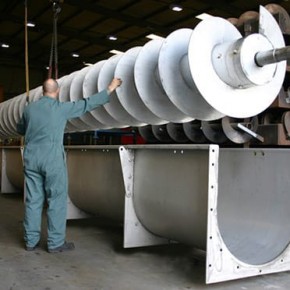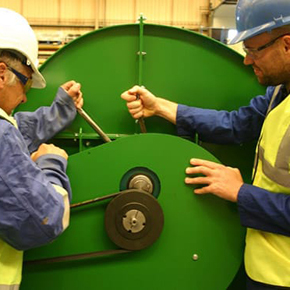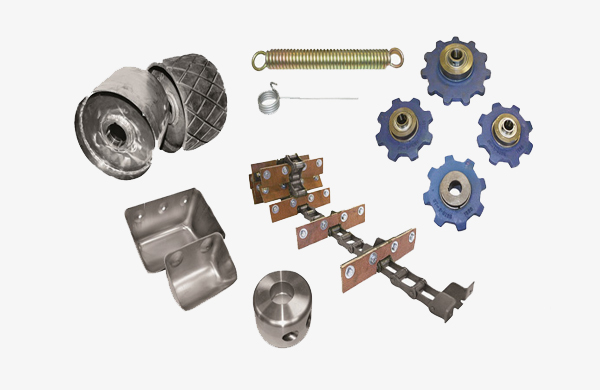
The importance of effective spare parts management
Doug Anderson, Sales and Marketing Manager at Guttridge, offers some advice on how effective spare parts management can help improve efficiency and create savings for companies.
Many businesses across the world deal with heavy machinery or equipment that consumes maintenance materials, and spare parts management is one of the most important considerations to take into account. Having a strong spare parts planning system in place can offer benefits across many different aspects of operations.
There are two major areas that need to be addressed when it comes to spare parts management. Firstly, you need an accurate and complete set of data related to the items using the parts. Secondly, you need a strong forecasting process. Combined, these two concepts create the foundation of an effective spare parts management plan.
Complete data is a significant need for all businesses that rely on machines large and small to complete tasks, but is most acutely felt by companies supporting high-value assets across a large geographic area.
And when I say “you need strong forecasting”, I mean looking at reliability estimates, sources of supply and repair, among many other considerations. This includes tracking different versions of similar goods so the right parts are supplied to the correct location. While many businesses use sales data to establish their forecasting plans, it’s not enough to accurately predict needs while also taking the product lifecycle and other unique factors into account. Bring as many heads into the forecasting plans as you can, such as engineering and maintenance teams, as well as customers, to really give you an accurate picture.
To break it down, I will outline three major benefits to a business of effective spare parts management. Often, more complex improvements are realised with effective spare parts planning. Some business may have a different focus, such as high-value, complex assets like power plants and oil rigs, whereas other businesses may operate a fleet of company vehicles.
Many businesses in manufacturing use a wide variety of machines and processes. While there are plenty of secondary and tertiary benefits that come along with having the right parts in the right place at the right time, they all branch off from these three major advantages:
Increased service level of inventory
One way to sum up this advantage is: you basically do more with less. The increased service level is most closely tied to the concept of right parts, right place, right time. Businesses that implement the software and systems that drive efficiency in the spare parts planning space typically see a gain in inventory service levels. Parts are more able to be put to use quickly and effectively.
Improved equipment uptime
Downtime simply due to the want of a specific part, or even an selection of different ones, is usually avoidable with a strong spare parts management system.
While there will be the occasional exception, in general, fix-time rate will improve considerably. This always leads to savings, but the example of individual, large and high-value assets is the most striking. With good spare parts management, time spent with assets that are unusable is reduced.
Decreased investment in inventory
Finding the perfect balance between stocking levels for inventory and the investment made into spare parts is difficult without the right tools. Companies hold themselves back whether they’re carrying too much inventory or too little. A stocking level above the optimal range ties up funds unnecessarily and increases the risk that parts won’t be used.
 A spare parts inventory level below the right level means otherwise avoidable instances of downtime become regular drags on productivity and revenue. An effective spare parts management and planning system can allow businesses to reduce their live inventory – freeing up capital – while still maintaining high levels of service and accessibility.
A spare parts inventory level below the right level means otherwise avoidable instances of downtime become regular drags on productivity and revenue. An effective spare parts management and planning system can allow businesses to reduce their live inventory – freeing up capital – while still maintaining high levels of service and accessibility.
The concept of spare parts management as a discipline has evolved as technology has provided faster, more accurate methods for tracking, reporting and consolidating information.
One area where advances are already being seen, and where significant further improvements could arise, is in the Internet of Things. The ability to connect both low- and high-value assets to a network and have those items instantaneously transmit information about operations, efficiency, wear and tear and other concerns is proving a real asset for businesses. With data that doesn’t come from projections, but the machines themselves, a lean just-in-time delivery model becomes a reality, leading to further and more significant savings.
In my opinion, it simply boils down to having high priority spares in reserve as a contingency for any issues that arise unexpectedly. Especially those spares that come with a long lead time, or need to be sourced from overseas; time is money when your machines are out of operation.
Latest news

15th April 2025
West Fraser: CaberDek earns top marks from Home Counties carpentry specialist
A specialist carpentry sub-contractor covering housing sites across a large swathe of the Home Counties has come to value CaberDek from the West Fraser range for a variety of reasons: not least because the high quality panel product doesn’t destroy his operatives’ electric saws!
Posted in Articles, Building Industry News, Building Products & Structures, Building Systems, Case Studies, Restoration & Refurbishment, Retrofit & Renovation, Roofs, Timber Buildings and Timber Products, Wooden products
15th April 2025
GEZE: The Role of Access Control Systems in Enhancing Building Safety
Jane Elvins, Specification and Business Development Manager at GEZE UK, delves into the role of access control systems in enhancing building safety…
Posted in Access Control & Door Entry Systems, Architectural Ironmongery, Articles, Building Industry News, Building Products & Structures, Building Services, Doors, Facility Management & Building Services, Health & Safety, Restoration & Refurbishment, Retrofit & Renovation, Security and Fire Protection
11th April 2025
Don’t Do a Dave! It’s Time to Lock FIT Show 2025 in Your Calendar!
It’s that time again – FIT Show is back! You could be forgiven for thinking there won’t be much new to see when FIT Show returns to the NEC from 29 April – 1 May. Wrong!
Posted in Articles, Building Industry Events, Building Industry News, Building Products & Structures, Building Services, Continuing Professional Development (CPD's), Exhibitions and Conferences, Information Technology, Innovations & New Products, Restoration & Refurbishment, Retrofit & Renovation, Seminars, Training
11th April 2025
Insight Data: Boost construction success with project and prospect data
For those working in construction – in whatever capacity – the last few years haven’t been much fun. And according to the latest statistics, it would seem the challenges are continuing – Alex Tremlett, Insight Data’s Commercial Director, has more…
Posted in Articles, Building Industry News, Building Services, Information Technology, news, Research & Materials Testing
 Sign up:
Sign up: 